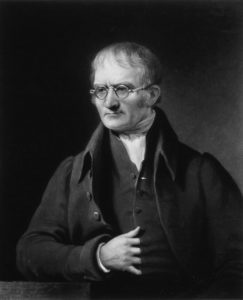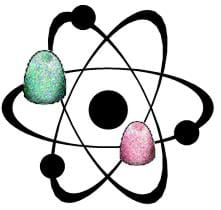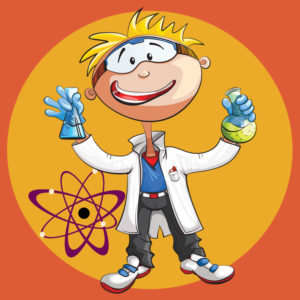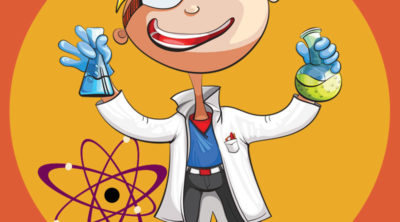This year, October 17 through 23 marks the American Chemical Society’s National Chemistry Week. Celebrated each year during the third week of October, this event promotes the value of chemistry in everyday life.
Dive into John Dalton
The American Chemical Society provides plenty of resources to help you and your class in your observance of the week. However, perhaps the best place to start would be by with a Walking Classroom podcast!
 Have a listen to John Dalton (4-#27, STEM-#45, Complete-#159), a scientist known by many as the “Father of Chemistry” for his contributions to the field. follow up with a quick summary of key facts and facets of Dalton’s work. Then, assess your students’ knowledge of the podcast content with a crossword puzzle.
Have a listen to John Dalton (4-#27, STEM-#45, Complete-#159), a scientist known by many as the “Father of Chemistry” for his contributions to the field. follow up with a quick summary of key facts and facets of Dalton’s work. Then, assess your students’ knowledge of the podcast content with a crossword puzzle.
A British scientist, John Dalton actually made important discoveries in several scientific fields. He was especially interested in meteorology, having kept daily weather records from 1787 until his death in 1844. He was also a pioneer in the study of color-blindness, a condition from which both he and his brother suffered, but he is best known for his work on Atomic Theory.
Thinking about Atomic Theory
There are several parts to Dalton’s theory:
- The first part states that all matter is made up of atoms.
- The second part says all atoms of an element are identical in their mass and properties.
- The third part says compounds are combinations of two or more different types of atoms.
and - The fourth part states that a chemical reaction is a rearrangement of atoms.
Learn more about the atom and its parts, then test your students knowledge of the “building blocks of matter” with an online quiz. Track developments in the field via an atomic theory timeline and encourage your students to research and create visuals like posters or oversized trading cards of the famous folks along the way.
 Looking for some other activities or experiments to engage your students further? Tackle the topic with a teacher-created lesson plan or have your students tickle their taste buds by creating edible models of atoms!
Looking for some other activities or experiments to engage your students further? Tackle the topic with a teacher-created lesson plan or have your students tickle their taste buds by creating edible models of atoms!
Studying Other Scientists
Dalton was just one of many scientists working in the field of chemistry. Encourage your students to explore the lives and contributions of others who worked in chemistry or famous scientists from various fields. Then, have them shared what they’ve learned via a Living Wax Museum.
Going Further with Physical Science
Explore physical science further with science activities for the classroom perfect for middle grades from the American Chemical Society. Working with older students? Check out these resources for teachers of middle schoolers!
Discussing Daltonism
Finding your students fascinated by the topic of color-blindness, of which Daltonism, or red-green color-blindness, is a form? Explore it further with a cross-curricular science and art lesson plan!
Learn about other timely topics and be on the lookout for more ideas in future posts.




Leave a Reply